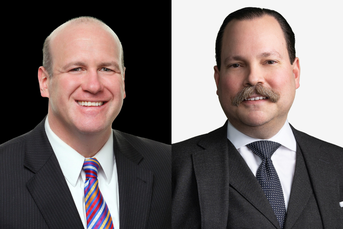States considering rules for how advisers charge subscription fees
 1
1
Guidance from NASAA likely to warn advisers not to charge monthly fee for advice alone.
State securities regulators are looking into new advisory fee models and likely will caution financial professionals not to charge clients just for their availability.
The North American Securities Administrators Association has been talking with investment advisers who are generating revenue in ways other than charging a fee based on client assets under management. For instance, Charles Schwab Corp. recently introduced subscription-based advice and the idea is becoming increasingly popular among small advisers who are regulated at the state level.
State regulators are scrutinizing these subscription agreements.
“Clients, if they’re on a monthly fee, must know what they’re getting and firms must, in fact, be delivering that service on a monthly basis,” said Ohio Securities Commissioner Andrea Seidt.
Ms. Seidt said NASAA is developing guidance for investment advisers who are using the subscription model. There’s no specific deadline for its release.
Advisers charging clients a monthly subscription fee should do something each month for those clients, Ms. Seidt said. For instance, they might put together a calendar of activities.
[More: Should asset-based pricing models stay or go?]
Regulators also are taking a hard look at advisers who combine a subscription fee with an AUM charge. Ms. Seidt said they should ensure that the expenses do not become excessive.
“As these fees get added, it raises concerns about the reasonableness of the fee and what services are actually being provided,” she said.
Advisers also should make it simple for clients to opt-out of subscriptions.
“We would encourage small advisers to hardwire in automatic cancellation if a client isn’t using [a subscription] for a long period of time,” she said.
[Recommended video: Financial planning wasn’t even a thing 50 years ago]
A relatively small number of advisers are moving to subscription services. The XY Planning Network is leading the charge on this, as most of its 1,065 advisers who are part of the network use subscription pricing. Many of them have less than $100 million in AUM, which means they fall under state jurisdiction.
Michael Kitces, an XYPN founder, has been talking with state regulators. He said they unfairly give more leeway to the AUM model than the subscription approach when determining what clients get for their money.
For instance, he said XYPN studies have shown that AUM-only advisers may effectively charge $500 per hour for advice, while advisers charging monthly or hourly fees bill hundreds of dollars less.
“The problem is that state regulators are grossly out of touch with what advisers do with their time for their clients,” said Mr. Kitces, who also is director of wealth management at Pinnacle Advisory Group. “The states are applying rules to the financial planning model that they don’t apply to the AUM model, and, if they did, the AUM model wouldn’t pass either.”
[Recommended video: Next generation clients want advisers to help them live better lives]
Some states have told XYPN advisers that charging more than $200 to $250 an hour for advice is excessive, Mr. Kitces said.
Sheryl Garrett, founder of the Garrett Planning Network, opposes regulatory ceilings. She said the knowledge and skill of an adviser should dictate how much they charge.
“I have a real severe problem with capping hourly rates,” Ms. Garrett said. “You could be three or four times [the level of a state cap] and be a huge value for the average person.”
The 230 advisers in Ms. Garrett’s network charge a flat fee based on the estimated time it takes for them to provide services.
“Hourly is so non complicated,” she said. “You pay for the time, period. I am 100% in support of full transparency and clients knowing what they pay for and what they’re going to get.”
Mr. Kitces said coupling a subscription fee with an AUM fee can be justified.
“It’s okay as long as they’re separate services,” he said.
The Financial Planning Association is hearing from its members about state regulators looking into new fee models, according to Josephine Colacci, FPA public policy counsel. One challenge is that each state may take a different oversight approach.
“It seems not to be the same answer in every state,” Ms. Colacci said.
The learning process will continue for advisers and regulators.
“Our fee structures are slower to evolve than our services, and the regulators are trying to catch up with our fee structures,” Ms. Garrett said.
Investing in profitability, performance and people: Register today for our Top Advisory Firm Summit.
Learn more about reprints and licensing for this article.








